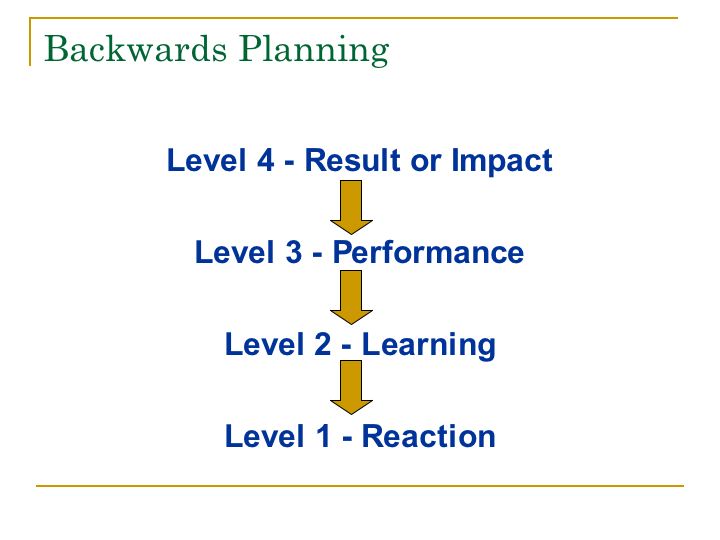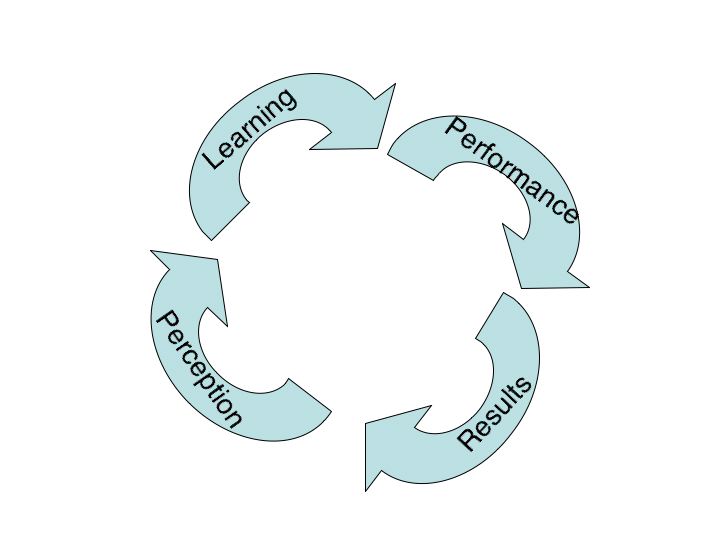- Reaction - how the learners react to the learning process
- Learning - the extent to which the learners gain knowledge and skills
- Performance (behavior) - capability to perform the learned skills while on the job
- Results (impact) - includes such items as monetary, efficiency, moral, etc.

Thus, planing and analysis needs to work backward by identifying:
- the desired impact (outcome or result) that will improve the performance of the business
- the level of performance the learners must be able to do to create the impact
- the knowledge and skills they need to learn in order to perform
- what they need to perceive in order to learn (the need to learn)

The learners' perception of the need to learn should motivate them to learn, which in turn causes the desired performance that drives the impact desired by our customer (client). This causality should continue in a circular fashion in that the results achieved should now drive the performers' perceptions of the need to learn more and perform better in order to achieve even better results. Of course this assumes that not only the customer understands the level of impact achieved, but also the performers/learners' perception on how close they came to achieving the desired result.
5 comments:
I like this, and agree that starting with the impact and working backwards is a good strategy (cf Tony Karrer's recent post about a case study). Like you should start ID from your objective. I note that a client (small software firm in Redmond :) touched on something I like: level 0. Are they even 'there', or are they voting with their feet and staying away in droves?
Clark, I like the level 0 -- in order to get their perception or reaction you have to first get them in the learning environment.
Brilliant, Don.
I will blog about this.
Regards,
Terry
Great post! Have translated it into Chinese.
http://www.traininginn.com/bbs/viewthread.php?tid=317&page=1&extra=page%3D1#pid524
OK here's the link:
http://learningvoyager.blogspot.com/2008/12/trainings-effectiveness.html
Terry
Post a Comment